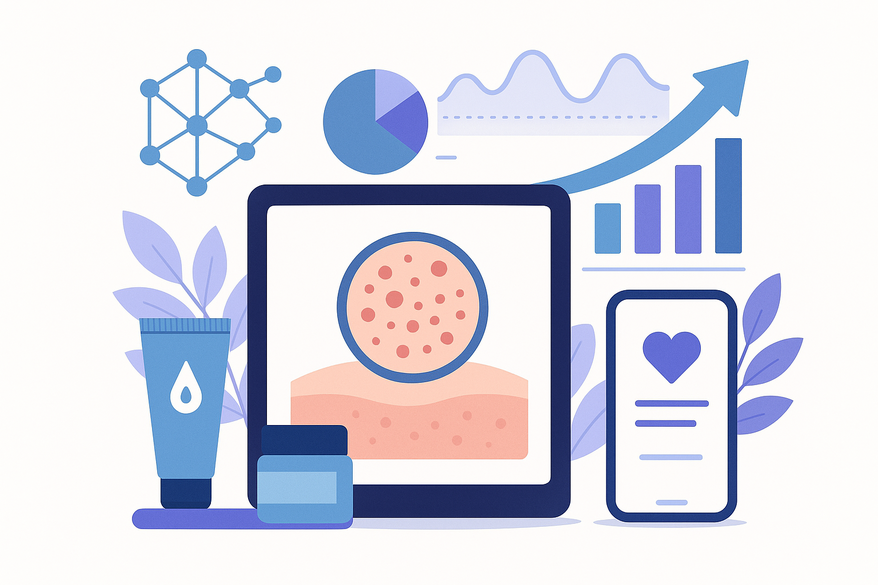Data-Driven Rash Treatment Insights Revolutionizing Precision Dermatology
Explore how data-driven rash treatment insights, powered by machine learning and analytics, personalize care and enhance dermatology outcomes.

Estimated reading time: 8 minutes
Key Takeaways
- Integration of clinical, imaging, and patient-reported data enables precise rash assessment.
- Machine Learning and predictive analytics tailor therapy and forecast flares.
- Digital monitoring and real-world evidence drive early intervention and guideline updates.
- Challenges include data privacy, quality, and algorithmic bias in diverse populations.
Table of Contents
- Defining Data-Driven Rash Treatment Insights
- Why It Matters
- Background on Rash Treatments
- The Role of Data in Enhancing Rash Treatments
- Data Collection and Analysis in Rash Treatment
- Benefits of Data-Driven Insights
- Challenges and Considerations
- Conclusion
- Call to Action
- Further Resources
Defining Data-Driven Rash Treatment Insights
Data-driven rash treatment insights merge longitudinal electronic medical record entries, calibrated imaging, and patient feedback. By tapping into structured severity scores, narrative clinician notes, and digital measurements, clinicians gain a panoramic view of rash dynamics.
- Longitudinal EMR data: severity scores and narrative notes
- Medical images and calibrated skin measurements
- Patient-reported outcomes: itch scores and quality-of-life surveys
- Machine learning models for trend extraction and therapy personalization
Why It Matters
Traditional dermatology often depends on subjective scoring and memory, leading to delayed adjustments and suboptimal outcomes. Data-driven methods enable:
- Risk stratification to identify likely nonresponders
- Early, adaptive treatment based on real-time metrics
- Rapid generation of real-world evidence to inform guidelines
Background on Rash Treatments (data-driven rash treatment insights)
Traditional Methods Overview
- Visual assessment and differential diagnosis; biopsy when needed
- Escalation from topical steroids to systemic agents by severity
Limitations of Conventional Approaches
- Subjective scoring and clinician experience-driven decisions
- Trial-and-error regimens prolong patient discomfort
- Lack of objective, longitudinal tracking delays intervention
Transition to Data-Driven Approaches
- Molecular profiling (e.g., single-cell RNA sequencing) for biologic response prediction
- Smartphone lesion-tracking apps and digital image analysis
Clinicians and patients now leverage AI-powered platforms such as Rash Detector to upload lesion images and integrate insights into care workflows.

The Role of Data in Enhancing Rash Treatments (data-driven rash treatment insights)
In a learning health system, analytics ingest time-stamped clinical, imaging, and patient-generated data to refine diagnostic and therapeutic loops. For deeper insight into AI-driven rash diagnosis, see how AI diagnoses rashes.
Types of Data Sources
- Patient History & EMR: EASI scores, clinician notes, lab tests
- Imaging & Digital Measures: standardized photos, 3D scans, app tracking
- Patient-Generated Data: itch analog scores, DLQI surveys, wearable sensors
- Biospecimens: genomic and transcriptomic profiles for subtyping
Enabling Technologies
- Machine Learning: patient clustering and risk stratification
- Predictive Analytics: flare and response forecasting
- Computer Vision: automated lesion detection and scoring
Explore transformative big data in dermatology and learn about AI analytics for skin health.
Data Collection and Analysis in Rash Treatment (data-driven rash treatment insights)
- Data Ingestion & Cleaning: de-identification and normalization
- Feature Engineering: lesion growth rates, molecular signatures
- Model Training & Validation: cross-cohort validation and external testing
- Continuous Learning: iterative updates as new data accrue
Benefits of Data-Driven Insights (data-driven rash treatment insights)
- Improved Diagnostic Accuracy: >90% sensitivity in eczema vs. psoriasis classification
- Personalized Treatment Plans: bespoke regimens from multi-dimensional profiles
- Early Intervention: flags subclinical flares through longitudinal monitoring
- Fewer Trial-and-Error Cycles: predictive identification of nonresponders
Challenges and Considerations (data-driven rash treatment insights)
- Data Privacy & Security: HIPAA compliance and consent protocols
- Data Quality & Standardization: interoperable scales and validation
- Algorithmic Bias: need diverse training cohorts for generalizability
- Workflow Integration: explainable analytics embedded in EHRs
Conclusion (data-driven rash treatment insights)
Data-driven rash treatment insights unify clinical, imaging, and patient-reported data with advanced analytics to deliver precise diagnosis, early action, and tailored therapies. As digital tools and learning systems evolve, these methods will redefine standard care protocols.
Call to Action (data-driven rash treatment insights)
Share your experience: how have data-driven rash treatment insights shaped your clinical decisions or personal care?
Further Resources
- PMC learning health frameworks in dermatology
- PubMed on predictive modeling in rash care
- Precision medicine for rash classification
- Proactive rash management trial
FAQ
- What are data-driven rash treatment insights?
- They combine diverse clinical, imaging, and patient-generated data with machine learning and predictive analytics to personalize rash care.
- How do clinicians collect the necessary data?
- Data come from EMRs, calibrated images, mobile apps, patient surveys, and biospecimens, all de-identified and normalized.
- What benefits do these insights offer?
- Improved diagnostic accuracy, early intervention, customized therapies, and reduced trial-and-error cycles.
- What challenges must be addressed?
- Data privacy, quality standardization, algorithmic bias, and seamless integration into clinical workflows.





